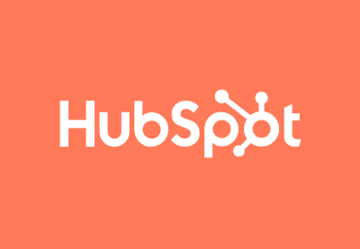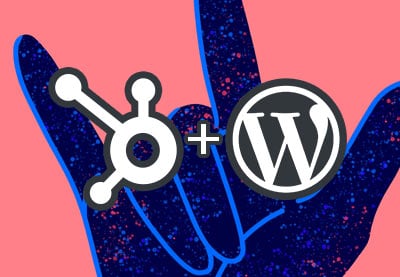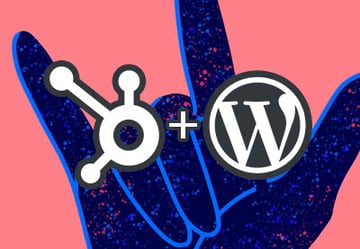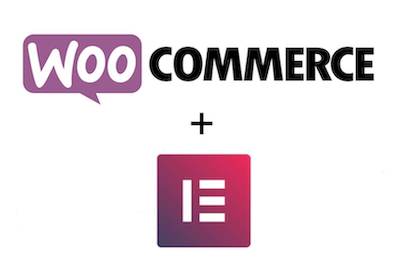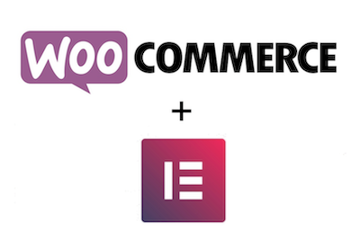As a business manager, you’re responsible for optimizing sales strategies, marketing activities, and communication methods to level up your business. Today, many online tools are available to make it easy for you to manage, market, and optimize your online store and boost your sales. HubSpot is one of these helpful online assistants that you can connect to your WooCommerce store and manage your business easier.
In this beginner’s guide I will show you how to connect your WooCommerce store to the HubSpot platform (using a free WordPress plugin) and we will learn how to use them together to build a better online business.
If you need more fundamental information about HubSpot and WooCommerce, I recommend reading the articles below before continuing with this post.
What Can HubSpot and WooCommerce do?
If you sign up for a HubSpot account you’ll access an easy-to-use panel on the HubSpot website packed with features to help you with your management role in your website. Once you connect your WooCommerce store to your HubSpot account, it can sync all your WooCommerce data and collect everything in your panel.
Using this information you’ll be able to track each contact’s abandoned cart, orders, activations, email interactions, and more. You can also segment your contacts and customers into different groups or lists based on their previous activities or their order statuses.



HubSpot also allows you to create and send marketing emails for all (or a specific group) of your contacts and customers. To drive more traffic to your site you can build advertising campaigns with HubSpot marketing tools and track the ROI, or quickly evaluate the efficiency or profitability of your investments.
To track your online store’s performance, it’s a good idea to use the in-depth eCommerce Analytics information collected by HubSpot automatic tracker. It will help you build a better user experience, armed with knowledge about contacts’ behavior, and let you find out the best ways to encourage them to visit your online store again.
A little later you’ll read more about these features. For now let’s start with the integration between your WooCommerce store and the HubSpot platform.
How to Integrate WooCommerce With HubSpot
Before installing the HubSpot for WooCommerce plugin, you need a WordPress website with the WooCommerce plugin installed. It doesn’t matter whether you have products and other information on your site or not; once you install the HubSpot plugin, it will sync all your available content and categorize and organize it into your HubSpot account.
1. Download and Install HubSpot for WooCommerce Plugin
To install the HubSpot for WooCommerce plugin, first, log in to your WordPress dashboard and then from the dark left-hand menu, click Plugins > Add New and search for the “HubSpot” keyword.



When the plugin appears, click Install Now and activate it. Like the screenshot above.
2. Connect Your Website to a HubSpot Account
After activation of the plugin, a new submenu item will appear under the WooCommerce menu item. Select HubSpot to start the connection process between your online store and HubSpot.



On the first screen, you’ll see an introduction to the plugin and its features. Here you need to choose between two simple options–creating a new HubSpot account, or continuing with an existing one. If you haven’t made a HubSpot account yet, you can now do so by clicking on Create Your Account.



The signup process is quite easy. Write down your own information and email address and click Next. After that, you need to answer some questions about yourself and your business. Make sure to answer them honestly and carefully because it will help the HubSpot support agents to guide and help you achieve what you expect from the platform. The questions are:
- What industry are you in?
- What is your job role?
- What is your company’s name?
- How many people work at your company?
- What is your company’s website?
- Which of these sounds most like you?
- Which part of the CRM platform do you want to explore?



Simply choose or write down your answers and click Next if needed. After answering all the questions, you’ll be redirected to your newly-created HubSpot account, prompting you to connect it to your WooCommerce website.
To do that, choose your account (if you have one, then you don’t need to do anything) and click Connect App.



Good job! You successfully passed the first step in connection process. Now it’s time to set up groups, lists, and properties for your HubSpot account and get it ready to sync your data.
3. Setting Up the Requirements of WooCommerce for HubSpot
Go back to your WordPress dashboard and follow the rest of the integration process. Once done, you need to create some groups and properties for your HubSpot panel that will include the products, orders, abandoned carts, and more. To set them up, click Create Groups & Properties.



Building groups and properties may take longer depending on the amount of your pre-made contents (products, orders, etc.).



In the next step, you need to let HubSpot create segmented lists for your users. A HubSpot list includes certain people who’ve performed the same actions and behaviors on your sites, like leads (users who have not made any orders), customers, users who have at least one abandoned cart, etc.
Click Create Lists and wait until it ends.



Next, click Sync Now to start syncing data from your WooCommerce store.



It will take a few seconds for the plugin to upload all necessary data to your HubSpot account.



After loading, you’ll see a congrats message: you have successfully set up HubSpot for WooCommerce plugin. Well done!



Now let’s go further and discover different parts of the plugin.
Adjust Settings in the HubSpot for WooCommerce Plugin
The plugin that we have installed is just for the connection between your site and the HubSpot platform. All management work like creating ads, task automation, working with analytics information, email marketing, and more can be done from your HubSpot account on the official HubSpot website.
You can use different sections of the plugin to customize and change settings for HubSpot tracking or syncing system. There are also some add-ons and features available under its tabs. Let’s see what these tabs include!
Dashboard Tab in the HubSpot Plugin for WooCommerce



In the dashboard tab, you can see an overview of the synced data and some useful links to the HubSpot documentation, your HubSpot account, and other tabs of the plugin.
Exporting WooCommerce Contacts and Customers to HubSpot



When a new visitor signs up on your site, or when a new customer makes a purchase on your online store, a notification will appear under the Contacts tab. When you click Sync Now, new contacts will sync and organize under one of the lists in your HubSpot account. Here you can choose whether the HubSpot automatic tracker should track a certain user role or not.
Syncing Deals or WooCommerce Orders



Under the Deals tab, you can choose what orders should be synced and how.
Change Settings for Tracking Abandoned Carts



Under the Abandoned Carts tab, you can choose how to track abandoned carts and enable or disable tracking them for guests or all contacts of your site.
The Cart Timer option defines how long a shopping cart should remain unpaid before it can be considered to be an abandoned cart. The minimum value is 5 minutes.
Automation Tasks for WooCommerce



There are many automated Workflows under the Automation tab. Here you can create new marketing and communicating tasks for your WooCommerce store and tell HubSpot how to communicate with leads, customers, or bulk customers.
These automated activities let your website communicate with your contacts through emails and ads to convert leads to customers, encourage customers to buy more, and finally increase your sales and improve the user experience.
Note: Automation is a pro feature. You need to buy a professional or enterprise plan of HubSpot to enable it.
HubSpot Add-ons for WooCommerce



If you’re looking for more features and options for your WooCommerce-HubSpot website, like email template packs, products add-ons, or field to field Sync option, you can use the Add-Ons tab to review or buy what you need.
Advanced Settings in the HubSpot for WooCommerce Plugin



In the Basic Settings section, you can check if the groups and lists were created correctly or not. You can also make other lists for your contacts (like Best customers, big spenders, loyal customers, and more) if you wish so. To see these options, click on the Manage button to expand any section you want.
Under the Advanced Settings section, you can customize some syncing options. You can choose which orders should be synced based on their order status (pending payment, processing, completed, etc. If you like to limit the HubSpot tracker to a specific user role (administrator, customer, guest user, etc.), you can also do it from this section.
Inside HubSpot panel
After integrating your WooCommerce store with the HubSpot platform, you’ll see seven menu items on top of your HubSpot panel.



Each menu item includes submenus that guide you to an important page in your HubSpot account, where you can access different marketing tools, analytic charts, or the collected information from your online store. Let’s quickly review them:
- Contacts: Under this menu, you’ll see all your synced contacts in segmented lists based on their previous activity on your store. When you click on any contact, you’ll be able to see all their activities and information.
- Conversations: One of the best features of HubSpot is the chat flow option. It allows you to set up a live chat on your site. If you add this option to your site, then you can manage your conversations and see your inbox under this menu. Read my tutorial about connecting HubSpot to WordPress to find out how to set up the mentioned live chat for your WordPress website.
- Marketing: Most marketing activities like creating and managing ads, email marketing, and building forms can be done here. With a professional HubSpot subscription, you can also access more marketing features (like SEO) under this menu item.
- Sales: From this section, you can see all your synced orders or deals. Here you can also find another useful submenu (tasks) that lets you manage your required activities using a calendar.
- Service: This menu is for CMS Hub users. It allows them to set up a ticketing system for their website. it will help the visitor to communicate in a more straightforward manner with support agents.
- Automation: With this option you can automate your email campaigns and let the HubSpot platform send the correct email to the right leads at the right time.
- Reports: Reports are analytics information about your online store. There are different analytic dashboards under the report menu. I recommend using the eCommerce dashboard as your preferred information reporter because it is more related to WooCommerce contents. It has a lot of helpful charts that make you able to track your site’s performance with ease.
One Step Further
As you can see in the previous sections, most of HubSpot activities can be done from the inside of its panel (out of the WordPress dashboard) and this may not be to your liking. Furthermore, there are some other tools like live chat that you can’t enable using the plugin.
Well, HubSpot has created another plugin that allows you to manage your contacts, track different activities, build fantastic forms or email templates, and more directly from your WordPress admin area. To access these features, install the official HubSpot plugin for WordPress.



If you’re interested in more details about this plugin and if you want to know how to use it, please take a look at the article below.
Best HubSpot-ready Plugins and Add-ons for WordPress
Sometimes using extra plugins and add-ons can be a good idea for improving the functionality of other plugins or the efficiency of different marketing activities in your business. Check out these valuable add-ons and plugins for your HubSpot and WooCommerce based online store:
1. Milia – Responsive Email with 100+ Modules



Creating attractive and smart marketing emails has always been one of the best ways to attract more visitors and increase sales. Well, Milia can help you with this task. It is an email template library and template builder for HubSpot and other email service providers that let you create more engaging email campaigns.
2. Integration for HubSpot and WooCommerce



In the previous sections, we connected a WooCommerce online store to the HubSpot platform using a third-party plugin created by MakeWebBetter (recommended by the official WooCommerce and HubSpot website). But there are also other plugins available on the WordPress repository for connecting a WooCommerce store to the HubSpot website.
So if you’re interested in using a different plugin to integrate HubSpot with your online store, this plugin is what you need.
3. Jupiter – E-commerce Responsive Email Template



Jupiter is another email template library that can be used with HubSpot for marketing purposes.
“Our template is compatible with MailChimp, Campaign Monitor, Klaviyo, HubSpot + 25 Email Service Providers. All the features of each platform are fully supported, something that makes the customization of the template really easy.”
4. Gravity Forms HubSpot



HubSpot is a powerful marketing assistant for your business. As a WordPress website manager, you’re allowed to use other popular plugins with this platform to improve your site’s performance. This plugin helps you integrate the Gravity Forms plugin with HubSpot and build a better user experience for your visitors while they use forms.
Conclusion
In this tutorial you have learned how to connect your WooCommerce store to a HubSpot account, and now you can use these tools together to grow your business. If you’re looking for more articles about HubSpot or WooCommerce, please read the articles below. Good luck.


 WordPress19 Best WooCommerce Add-Ons for a Customer-Focused Store
WordPress19 Best WooCommerce Add-Ons for a Customer-Focused Store

 WordPressHow to Build a WooCommerce Store With Elementor
WordPressHow to Build a WooCommerce Store With Elementor

 HubSpotWhat is HubSpot?
HubSpotWhat is HubSpot?

 HubSpotHow to Connect HubSpot to WordPress
HubSpotHow to Connect HubSpot to WordPress

 WooCommerce10+ Top WooCommerce Furniture Themes for WordPress
WooCommerce10+ Top WooCommerce Furniture Themes for WordPress

 WordPress20 Best WooCommerce Product Add-Ons
WordPress20 Best WooCommerce Product Add-Ons

 HubSpot15+ Best HubSpot Landing Page Templates
HubSpot15+ Best HubSpot Landing Page Templates

 HubSpot15+ Best HubSpot CMS Hub Themes
HubSpot15+ Best HubSpot CMS Hub Themes

 WordPress20 Best WooCommerce Product Add-Ons
WordPress20 Best WooCommerce Product Add-Ons

 WooCommerce15 Best WooCommerce Technology Themes for Computers and Electronics
WooCommerce15 Best WooCommerce Technology Themes for Computers and Electronics

